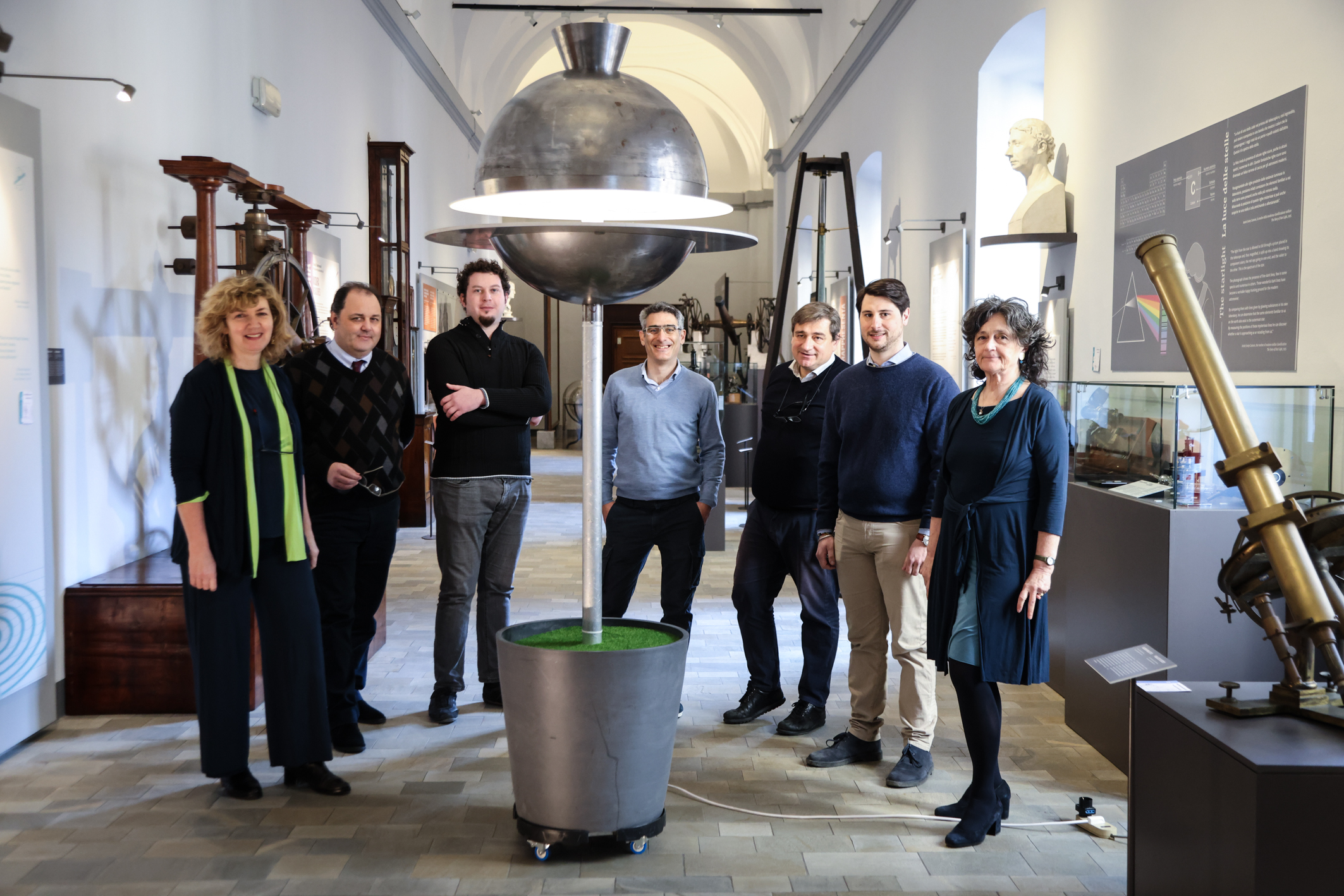

The idea for its design came at the multidisciplinary scientific congress "Contagio - Humans Against Viruses" held in Milan on 2-3 February 2021, where scientific and technological research in astrophysics met with a design attentive to environmental sustainability (http://www.contagio.online ).
The Congress was conceived and promoted by architect Natasha Calandrino Van Kleef together with the Presiding Board of the Milan City Council. The meeting provided an opportunity to discuss in a multidisciplinary and multicultural scientific setting the issues of contagion, with particular reference to the Covid-19 pandemic. The discussion involved virologists, biologists and astrophysicists who carry out their research activities in the Milan area and who, at different levels, have worked to combat the spread of the SARS-COV-2 virus. The main topics covered were the spread of epidemics and their dependence on seasonality, the functioning of vaccines, and technologies for disinfecting air and surfaces in closed environments.
Some interesting results were obtained from the collaboration between researchers from the Italian National Institute for Astrophysics (INAF, www.inaf.it) and doctors and biologists from the University of Milan researching together as part of the actions promoted by the Ministry of University and Research to combat the Covid-19 pandemic.
In particular, they studied the efficiency at which different bands of the UV radiation are able to inhibit the replication of the virus. As explained by Dr. Giovanni Pareschi and Dr. Giorgia Sironi, researchers at INAF - Osservatorio Astronomico di Brera, and prof. Mara Biasin of the University of Milan in their talks, the seasonality of the pandemic waves observed in the last two years may be linked to the fact that SARS-COV2 is more prone than other viruses and bacteria to be inactivated by the Solar UV-A and UV-B rays reaching the Earth's surface with higher fluxes in warm seasons and at favourable latitudes. The Solar UV-C radiation, which is absorbed by the Earth’s atmosphere, can be produced using artificial light sources (mercury-vapour fluorescent lamps and LEDs). It has also been well known for decades that UV-C light is highly effective in inactivating various viruses and bacteria (several orders of magnitude more so than UV-B and UV-A) and is therefore also considered a very important tool for reducing the spread of the SARS-Cov2 virus. An important result obtained by the group of astrophysicists and biologists from Milan as early as May 2020, widely disseminated internationally, was the direct quantitative measurement of the ability to inhibit the virus with UV-C light, with effectiveness proving particularly high.
One of the spin-offs of this result was the conception of "Saturno”, a disinfection system for public and private environments based on a functional design that aims at environmental sustainability and the well-being of people, while being aesthetically pleasing. The conception, design and prototype production of an ad hoc device was possible thanks to the collaboration between the INAF team and the studio of architect Natasha Calandrino Van Kleef. The system has been designed to sanitize closed environments through the recycling of ambient air, with no need for outside air (which could, for example, introduce cold air and decrease the internal temperature in the winter months, or allow inside highly polluted outdoor environments). The system takes the existing air in the room, subjecting it to a disinfecting treatment when it forced through the area illuminated by fluorescent UV-C lamps). The sanitized air is then continuously fed back into the room.
The name "Saturno" comes from the shape of the prototype, a spherical configuration with a protective ring, reminiscent of the planet and of the activity carried out by INAF. "Saturno" is an elegant system represented by a base formed by an earthen vase on wheels evoking our planet Earth and a technological top evoking the planet Saturn which sanitises the air we breathe.
 english version
english version
 italian version
italian version




